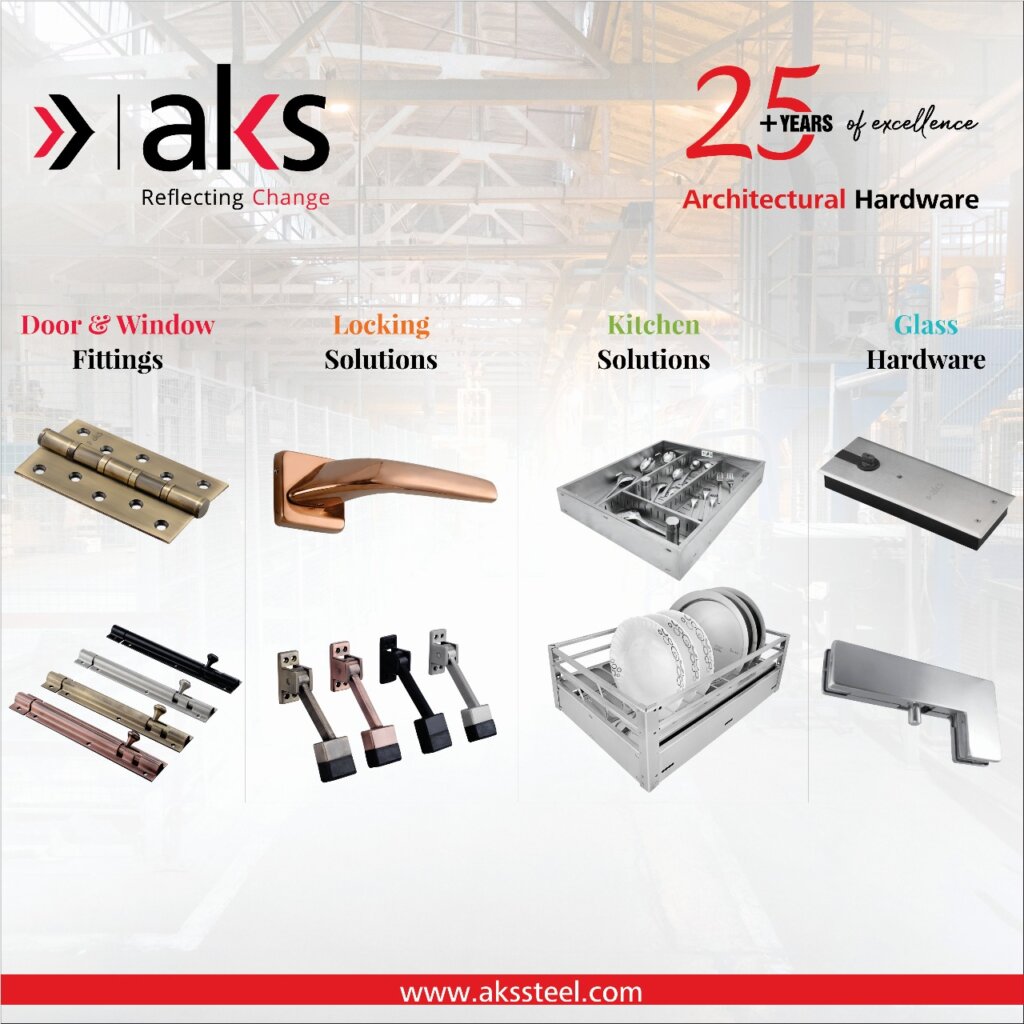Architectural Hardware: 10 Essential & Powerful Basics for Beginners

Architectural hardware is the backbone of modern buildings, playing a critical role in both functionality and aesthetics. In this beginner’s guide from aks, we’ll explore what architectural hardware is, why it matters, the essential types, and how to choose the right products for your projects.
Table of Contents
- What is Architectural Hardware?
- Why Architectural Hardware Matters
- Types of Architectural Hardware
- Common Materials Used
- Modern Trends in Architectural Hardware
- Mistakes to Avoid
- How to Choose the Right Hardware
- Care & Maintenance Tips
- Why Choose aks for Architectural Hardware
- Conclusion
What is Architectural Hardware?
The term architectural hardware refers to the mechanical components and accessories that support and enhance the structure, security, and usability of a building. This includes door handles, hinges, locks, bolts, railings, glass fittings, sliding systems, and many more. Simply put, if it opens, closes, supports, or secures — it’s probably architectural hardware.
Why Architectural Hardware Matters
- Functionality: Ensures doors, windows, and cabinets work smoothly.
- Safety: Provides security through locks, latches, and bolts.
- Durability: Protects against wear and tear in high-use areas.
- Aesthetics: Complements the design theme of the building.
- Value Addition: High-quality hardware increases property value.
Types of Architectural Hardware
Architectural hardware can be broadly classified into several categories:
1. Door Hardware
Includes door handles, knobs, locks, hinges, closers, and stoppers. High-traffic areas demand heavy-duty and corrosion-resistant hardware.
2. Window Hardware
Includes fasteners, handles, restrictors, and sliding systems. Good window hardware balances ventilation with security.
3. Cabinet & Furniture Hardware
Includes drawer slides, cabinet handles, knobs, hinges, and shelf brackets. Often smaller in size but vital for interior usability.
4. Glass Hardware
Includes patch fittings, spider fittings, point fixings, and sliding tracks used in modern glass facades and interiors.
5. Security Hardware
Includes locks, access systems, door viewers, and electronic locking systems. Security hardware has become smarter with IoT integration.
6. Exterior & Structural Hardware
Includes railings, brackets, supports, and expansion joints. These are exposed to the elements, so material choice is critical.
Common Materials Used in Architectural Hardware
The durability and performance of architectural hardware depend heavily on the material:
- Stainless Steel: Corrosion-resistant, durable, and modern-looking.
- Brass: Attractive, antimicrobial, but costlier.
- Aluminium: Lightweight, affordable, corrosion-resistant.
- Zinc Alloy: Good for decorative hardware, less durable under heavy load.
- Iron & Steel: Strong, but needs protective coatings to avoid rust.
Modern Trends in Architectural Hardware
- Minimalist Designs: Slim, sleek, and unobtrusive hardware.
- Smart Hardware: Integration with smart locks, access cards, and mobile apps.
- Matte Finishes: Matte black and brushed finishes are popular in modern interiors.
- Sustainable Materials: Eco-friendly coatings and recyclable metals.
- Custom Hardware: Bespoke designs for premium projects.
Mistakes to Avoid When Choosing Architectural Hardware
- Ignoring Material Quality: Cheap hardware may fail quickly.
- Mismatch with Design: Wrong finishes clash with interiors.
- Overlooking Functionality: Aesthetic pieces that are impractical.
- Not Considering Maintenance: Some finishes require frequent care.
- Skipping Professional Advice: Choosing hardware without expert guidance.
How to Choose the Right Architectural Hardware
When selecting architectural hardware, keep in mind:
- Functionality and purpose.
- Material durability and resistance to corrosion.
- Design harmony with overall interiors and exteriors.
- Budget and long-term value.
- Brand reliability and warranty support.
Care & Maintenance Tips
To ensure your architectural hardware lasts longer:
- Clean regularly with mild soap and water.
- Avoid harsh chemicals that damage finishes.
- Lubricate hinges and locks periodically.
- Inspect hardware for wear and replace damaged pieces promptly.
Why Choose aks for Architectural Hardware
aks is a trusted manufacturer of premium architectural hardware in India. With years of expertise, a wide product portfolio, and a commitment to quality, aks provides hardware solutions that combine durability, functionality, and modern design. Whether you are a homeowner, architect, or builder, aks offers products tailored for every need.
Contact aks today to explore reliable architectural hardware solutions for your next project.
Conclusion
Architectural hardware is far more than accessories — it’s the framework that keeps buildings safe, functional, and visually appealing. By understanding the types, materials, and modern trends, beginners can make informed decisions. Choose wisely, maintain well, and partner with trusted brands like aks for lasting value.
Ready to upgrade your project? Discover premium architectural hardware from aks and bring durability and elegance into every detail.